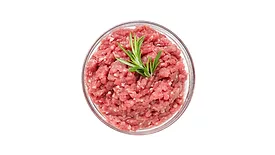Meat/Poultry
Nitrite for Meat Preservation: Controversial, Multifunctional, and Effective
Nitrite has several functional purposes in meat, including the formation and conservation of a stable red color and the inhibition of growth of C. botulinum
Anette Granly Koch M.Sc., Ph.D.
Gudrun Margret Jónsdóttir M.Sc.
Marlene Schou Grønbeck M.Sc.
Gry Carl Terrell M.Sc.
October 15, 2025
BIZTRACKS
The Meat Institute Joins the Alliance to Stop Foodborne Illness
September 19, 2025
Never miss the latest news and trends driving the food safety industry
eNewsletter | Website | eMagazine
JOIN TODAY!Copyright ©2025. All Rights Reserved BNP Media.
Design, CMS, Hosting & Web Development :: ePublishing











